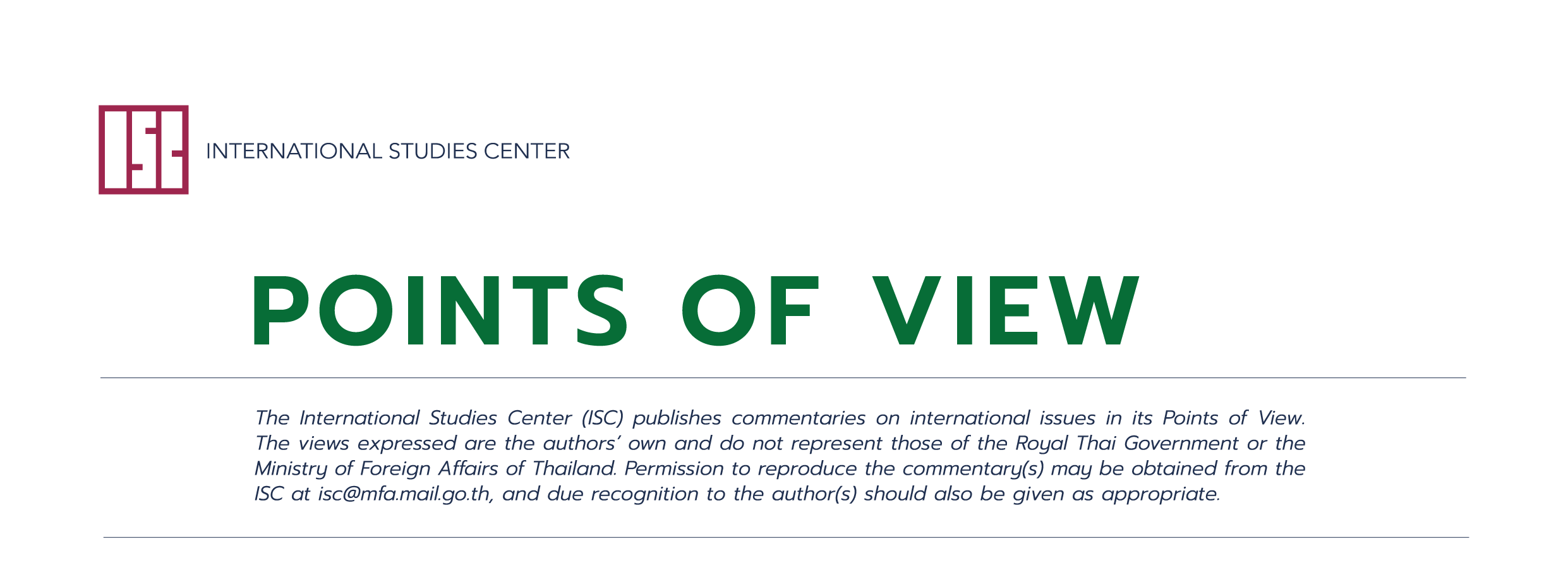South Korea's New Foreign Policy Roadmap | Kavi Chongkittavorn
South Korea's New Foreign Policy Roadmap | Kavi Chongkittavorn
วันที่นำเข้าข้อมูล 30 May 2022
วันที่ปรับปรุงข้อมูล 14 Dec 2022
 |
No. 5/2022 | May 2022
South Korea's New Foreign Policy Roadmap
Kavi Chongkittavorn*
(Download .pdf below)
The newly elected South Korean President Yoon Suk-yeol has taken a different diplomatic path to reposition his country in the global schemes of things. The Confident Diplomacy and Strong National Security policy announced recently will be the pillar of his administration in facing both ongoing and new challenges emanating from a disruptive world.
The Yoon administration has refocused foreign and security policy by strengthening the country’s own defence forces and its security alliance with the US as well as improving ties with Japan and China. The purpose remains unchanged, that is to respond firmly to North Korean nuclear and missile threats.
The impacts of the Russia-Ukraine war have influenced the new government to adopt stronger policy measures on national security and defence on top of strengthening existing alliances and tightening security ties with Europe. South Korea will actively take part in the Quadrilateral Security Dialogue’s non-military activities such as vaccines, climate change, and emerging technology.
In addition, the Yoon administration is determined to improve ties with both China and Japan. It remains to be seen how the administration will be able to pursue diplomacy based on mutual respect with China. Both sides share a common interest to promote economic, public health, climate change cooperation, as well as cultural exchange.
The two countries also want to see a denuclearized North Korea. As the South Korean-US alliance is being strengthened, it is highly likely that the future ramped-up security cooperation, especially that related to Terminal High Altitude Area Defence (THAAD) could strain ties with China. Seoul argues that the defence system is specifically aimed at thwarting Pyongyang’s missile threats. But Beijing has a different idea altogether.
During his visit to Tokyo, Park reiterated that South Korea and Japan must find solutions to issues of history that are acceptable to both sides. That was a good overture from the new foreign minister. However, it will require extraordinary efforts and goodwill both from the government and public sides to come to terms with these historical legacies. For both sides, it has been nearly a century of suffering.
What the new government has yet to expand on is its approach to ASEAN, which was one of the main diplomatic highlights of the previous government. In the official announcement, the Yoon government pledges to build a “Global Cooperation Network” that is specifically designed to each region. For the South Korean-ASEAN relations, the government simply said that it would promote “win-win solidarity initiatives” and broaden diplomatic horizons to India and Oceania.
Concerning future ties with ASEAN, Seoul has identified four areas under the so-called “ABCD Strategy” namely advancing human capital, building health security, connecting culture and digitizing Asian infrastructure. These initiatives will maximize South Korea’s innovative assets in the scientific, technological and cultural realms and put them to good use.
It would be beneficial for the new government to build on the New Southern Policy Plus which has already laid strong foundations for the incoming administration to further strengthen solidarity with ASEAN and other developing countries. After all, the NSP Plus and ABCD strategy share similar objectives aimed at promoting the livelihood of ASEAN’s 656 million people, overcoming the post-COVID-19 pandemic, and creating an environment for safe, green, and sustainable development.
The new administration also wants to use its popular “soft power” that embodies the so-called “K-culture” that covers the whole gamut of modern living ranging from food and music to fashion and nail polish. Developing countries are receptive to the K-culture, which has been an added advantage for South Korea's diplomacy in the post-COVID-19 era. In addition, Seoul also hopes to link up through digital technology in areas of infrastructure.
Foreign Minister Park Jin has already met with Seoul-based ASEAN ambassadors and was quick to reassure them of South Korea’s continued engagement with ASEAN. Truth be told, former president Moon Jae-in was very committed to bolstering bilateral ties and cooperation with ASEAN and its members. He spent more time than any other Korean president visiting the grouping’s capitals and held talks with the ASEAN leaders as well as those who belonged to the Mekong’s lower riparian countries.
Furthermore, he also encouraged ASEAN to help reducing tension in the Korean Peninsula and assisting the ongoing efforts to denuclearize North Korea. That helped explaining why Singapore and Viet Nam, two key ASEAN members, were venues of historic summit between the US and North Korean leaders in June, 2018 and February 2019.
The new president even said that Seoul is willing to help Pyongyang to transform itself in all areas with an audacious plan but its northern neighbors must end missile tests and denuclearized. In such a scenario, ASEAN will have an important role to play in shepherding economic reforms in North Korea.
As such, the five-year-old NSP policy should be maintained as it could continue to be a good way to further strengthen South Korea’s position in ASEAN and the southern hemisphere. Under the previous government, ASEAN’s stature was elevated to the same tier as such great powers as the US, China, Japan, and Russia. In return, South Korea’s profile in ASEAN Plus Three framework has risen rapidly with impressive progress. Any deviation from this trajectory would be unnecessary.
[*] Veteran journalist on regional affairs